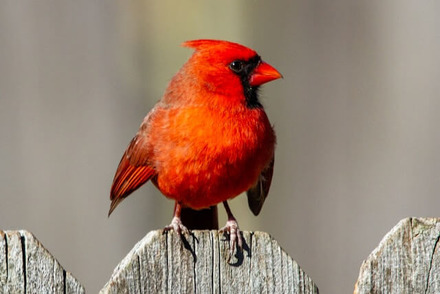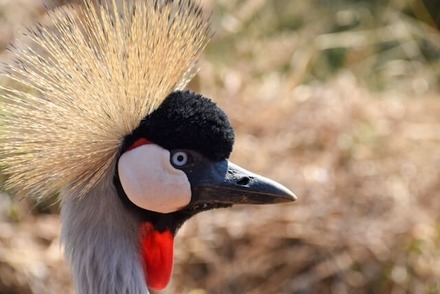Crested woodland birds are captivating creatures that birdwatchers and nature enthusiasts love. They have unique crests on their heads, which not only look cool but also serve important purposes. These birds live in woodlands all over the world, adding beauty and wonder to their natural homes.
But there’s more to them than just looks! Crested woodland birds play crucial roles in their ecosystems. They help with things like spreading seeds, controlling pests, and pollinating plants. When you see these birds, it’s a sign that the woodland environment is healthy and thriving.
In this post, we’ll explore the top 5 crested woodland birds from around the globe. By learning about these remarkable species, we hope you’ll appreciate them even more and understand why we need to protect them. So, let’s take a journey through forests and woodlands to discover these amazing avian wonders!
Table of Contents
- What Are Crested Woodland Birds?
- 1 – Northern Cardinal
- 2 – Crested Tit
- 3 – Grey Crowned Crane
- 4 – Hoopoe
- 5 – Eurasian Jay
- Frequently Asked Questions About Crested Woodland Birds
- Conclusion
What Are Crested Woodland Birds?
Crested woodland birds are a diverse group of birds known for the fancy feathers on their heads. Imagine a little tuft of feathers sticking up like a stylish hairdo! These birds live in forests all over the world, from chilly places to steamy rainforests. Their crests come in different sizes, shapes, and colors, making them stand out and look cool.
What’s the Crest For?
That tuft of feathers on their heads isn’t just for show. Crested birds use it to communicate. In addition to this, during lovey-dovey moments, a fancy crest can make a bird more attractive to potential partners.
Where Do Crested Woodland Birds Live?
Crested woodland birds hang out in all sorts of forests—deciduous ones (where leaves fall off in autumn), evergreen forests (with trees that stay green all year), and even city parks with lots of trees. You’ll find them everywhere, from North America’s cool forests to the steamy jungles of Southeast Asia.
How Did We Pick Crested Woodland Birds?
We carefully chose the top 5 crested woodland birds based on a few things:
- Beauty: We wanted birds that catch your eye, especially because of their crests.
- Uniqueness: Some of these birds are super rare or have special behaviors that make them stand out.
- Where They Live: We made sure to include birds from different parts of the world.
- Conservation: Some of these species need our help to survive, so we’re spreading the word about protecting them.
1 – Northern Cardinal
The Northern Cardinal is a medium-sized songbird known for its striking appearance. Males wear vibrant red plumage, while females have more subdued brown tones with hints of red. Both sexes sport a distinctive crest on their heads and a black mask around their faces. Their stout, conical beaks are well-suited for cracking open seeds, a primary part of their diet.

Where Northern Cardinal Live These adaptable birds can be found in various habitats, including woodlands, gardens, shrublands, and wetlands. Their range spans from Canada down to northern parts of South America. Interestingly, they’re equally comfortable in urban and suburban areas, often frequenting bird feeders and landscaped gardens.
Here are some unique facts about Northern Cardinals:
- Melodic Tunes: Male cardinals are excellent singers, using their beautiful songs to establish and defend territories.
- Home Defenders: Both males and females fiercely protect their nesting sites from intruders.
- Monogamous Couples: Cardinals stick together in pairs. During courtship, males even feed seeds to females—a romantic gesture in the bird world.
- Staycation Experts: Unlike migratory birds, Northern Cardinals stay put year-round in their cozy homes.
Conservation-wise, they’re doing well overall. Currently listed as a species of Least Concern, their populations remain stable or even increasing in some areas.
2 – Crested Tit
The Crested Tit is a small bird with a striking appearance. It has a black and white crest on its head, which it often raises to show off. The rest of its body is brownish-gray, with a white face and a black stripe around its eyes. Its beak is pointed and well-suited for eating insects.

Where Crested Tit Live Crested Tits live in coniferous forests, especially those with pine, spruce, and fir trees. They can be found across Europe, from the Iberian Peninsula to Scandinavia and parts of Russia. These birds stay in their territories all year and don’t migrate.
Interesting Facts
- Crested Tits are acrobatic foragers. They hang upside down on branches to find insects and spiders.
- They’re social birds, often forming small groups outside of breeding season and sometimes joining mixed-species flocks.
- During breeding, both male and female Crested Tits help build their nest in tree holes or old woodpecker cavities.
The Crested Tit is considered a species of Least Concern by the IUCN. Their population is stable, but habitat destruction from logging and forest management can still affect them.
3 – Grey Crowned Crane
The Grey Crowned Crane is a big, elegant bird that stands out because of its appearance. It has mostly gray feathers, but its wings have white, black, and gold colors. The most special thing about this bird is its golden, stiff crown of feathers on its head. It also has a white patch on its cheek, a red throat pouch, and long, thin legs that are great for wading. When fully grown, it can be about 1 meter (3.3 feet) tall with a wingspan of around 2 meters (6.5 feet).

Where Grey Crowned Crane Live You’ll find Grey Crowned Cranes in wetlands and grasslands in eastern and southern Africa. They live in countries like Uganda, Kenya, Tanzania, Zambia, and South Africa. They like to be near rivers, lakes, and marshes where they can find food and places to build nests.
Interesting Facts
- These cranes are famous for their beautiful courtship dances. They bow, leap, and bob their heads while making different sounds.
- Unlike other crane species, Grey Crowned Cranes can sleep in trees because they have a special toe that helps them hold onto branches.
- They eat a mix of things: insects, small reptiles, seeds, and grasses. Sometimes they search for food in fields, which can cause problems with farmers.
- Grey Crowned Cranes are loyal partners. They stay together for a long time and both parents take care of the eggs and chicks.
The Grey Crowned Crane is in danger according to the IUCN. Their biggest threats are losing their homes because of wetland destruction and turning land into farms. People also illegally keep them as pets or use their feathers for ceremonies.
4 – Hoopoe
The Hoopoe is a colorful bird that stands out because of its looks. It has a long, thin, curved bill and a fan-shaped crest on its head that it can raise or lower. Its feathers are a mix of cinnamon and buff, with black and white stripes on its wings and tail. The Hoopoe’s crest feathers have black tips, making it even more unique. When it’s grown up, it’s usually about 25-32 cm (10-12.5 inches) long.

Where Hoopoe Live Hoopoes live in lots of places, including Europe, Asia, and North Africa. They like open areas like grasslands, farmland, and orchards. During breeding season, you’ll find them in temperate regions, and some of them fly to warmer places during winter.
Interesting Facts
- Hoopoes make a special “hoo-hoo-hoo” sound that carries far and they repeat it several times.
- They mostly eat insects and other small creatures. Their long bills help them search in the ground and leaves for beetles, caterpillars, and ants.
- When they build nests, the female and chicks release a smelly substance to keep predators away.
- Hoopoes usually hunt alone and don’t often gather in big groups, except during migration.
According to the IUCN, in some places, they’re in danger because of habitat loss, pesticides, and hunting. To protect them, we need to save their homes, use safe farming practices, and make sure they’re legally protected. Public awareness helps too, especially during breeding season when they need peace and quiet.
5 – Eurasian Jay
The last bird in our list is the Eurasian Jay. It is a colorful bird that stands out. It has mostly pinkish-brown feathers with a white rump and belly. What’s really cool are the bright blue patches on its wings, with black and white stripes. It also has a black line from its bill to its eye. You might notice a small tuft of feathers on its head – that’s its crest. When it’s all grown up, it’s about 32-35 cm (12.5-14 inches) long.

Where Eurasian Jay Live Eurasian Jays live in forests and wooded areas across Europe and Asia. They like places with lots of trees, especially broadleaf forests and mixed woodlands. You’ll find them in parks and gardens too, especially where there are mature trees. Their range stretches from the British Isles and Scandinavia in the west to Japan and the Korean Peninsula in the east.
Interesting Facts
- These birds are super smart and can copy the sounds of other birds and even humans.
- They’re like little hoarders – they hide nuts and seeds in the ground or tree bark to eat later. Sometimes those hidden seeds grow into new trees!
- Outside of breeding season, Eurasian Jays like to be alone, but during breeding time and winter, they hang out in small family groups.
- When it’s time to impress a mate, they put on a noisy show with calls, dancing, and offering food.
The Eurasian Jay isn’t in trouble according to the IUCN. Their population is steady and they’re found in lots of places. But in some spots, deforestation and intense forestry practices threaten them. People also trap and hunt them illegally. To help, we need to protect their forest homes and keep an eye on how many of them there are.
Frequently Asked Questions About Crested Woodland Birds
A crested woodland bird is a bird species that lives in wooded areas and is distinguished by a tuft or crest of feathers on its head, which can be used for communication or display.
Examples include the Crested Tit, Northern Cardinal, and Eurasian Jay, each known for their distinctive head crests and woodland habitats.
Crested woodland birds are found in diverse forested habitats worldwide, including temperate woodlands, tropical rainforests, and even some urban areas.
The crest on these birds often serves multiple purposes, including attracting mates, signaling aggression or dominance, and aiding in communication within their species.
Migration patterns vary by species; some, like the Northern Cardinal, are non-migratory and stay in their habitat year-round, while others may migrate seasonally.
Conclusion
In this exploration of the top 5 crested woodland birds, we’ve highlighted the remarkable diversity and beauty of these avian species. From the vibrant Northern Cardinal to the elegant Grey Crowned Crane, each bird brings a unique charm and ecological value to its woodland habitat. These crested woodland birds not only captivate with their distinctive plumage and behaviors but also play crucial roles in maintaining the health of their ecosystems.
As we conclude our journey through these fascinating birds, it’s essential to remember their importance extends beyond their visual appeal. Protecting their habitats and supporting conservation efforts are vital to ensuring these birds continue to thrive. We encourage you to deepen your appreciation for these incredible species by learning more about their lives and engaging in conservation activities. Whether through local birdwatching groups, habitat restoration projects, or spreading awareness, every effort helps safeguard the future of crested woodland birds.
For those interested in exploring more about raptors, check out our article on Florida Hawks – Exploration of Species and Unique Traits to discover the unique traits and behaviors of these fascinating birds of prey.